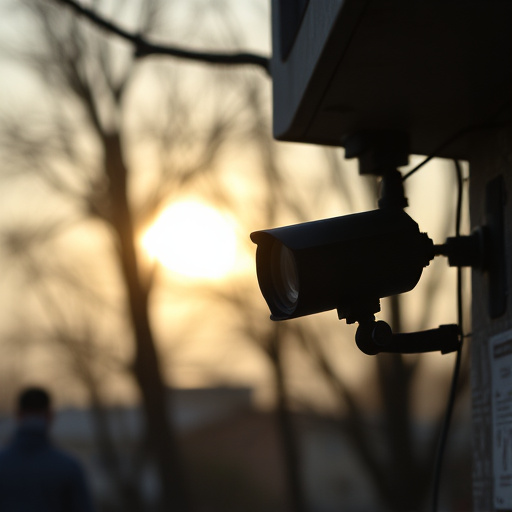Detecting hidden spy cameras indoors relies on understanding light reflection and utilizing advanced camera technology. Choosing the best indoor spy camera system involves considering space needs, features, installation methods, data security, and aesthetics. Creative tactics like manipulating light and using reflective surfaces further enhance privacy protection. Discreetly integrating cameras requires strategic planning, selection of quality equipment, and thorough testing for optimal surveillance without compromising room appearance.
Uncover the secrets of spy camera detection with our comprehensive guide. Learn how light reflection can expose hidden surveillance devices and protect your privacy. We explore advanced techniques and tools, from indoor surveillance gear to discreet camera integration, ensuring you stay one step ahead. Discover the best practices for choosing a top-tier indoor spy camera system and fortify your defenses against covert recording.
- Understanding Light Reflection for Spy Camera Detection
- Choosing the Right Tools for Indoor Surveillance
- Advanced Techniques to Avoid Camera Detection
- Integrating Discreet Cameras: A Step-by-Step Guide
Understanding Light Reflection for Spy Camera Detection
Understanding how light reflects can be a game-changer in detecting hidden spy cameras, especially for those seeking the best indoor spy camera system. This technique leverages the natural behavior of light when it encounters different surfaces. When light shines on an object or surface, it bounces back, or reflects, at varying angles depending on the material and texture. In the context of spy camera detection, this means that even tiny variations in reflection can indicate the presence of a hidden camera lens.
Professionals in this field employ specialized tools to analyze these reflections, looking for subtle differences that might suggest a camera’s location. For instance, a wall or ceiling reflection could reveal the outline or shape of a camera lens, helping investigators pinpoint suspicious devices. This approach is particularly useful in indoor settings where direct light sources and shadows can be manipulated to create unique reflection patterns, making it easier to identify hidden cameras and ensure privacy for those concerned about surveillance.
Choosing the Right Tools for Indoor Surveillance
Choosing the right tools for indoor surveillance is paramount when aiming to implement a robust best indoor spy camera system. The first step involves assessing your specific needs, including the size and layout of the space to be monitored. High-resolution cameras with advanced features like motion detection and night vision are essential for clear and detailed footage. Wireless or wired options should be considered based on ease of installation, aesthetic preferences, and budget constraints.
Additionally, selecting reliable hardware and software components is crucial. Look for camera systems that offer secure data transmission protocols to protect your privacy. User-friendly interfaces for remote monitoring and comprehensive storage solutions ensure convenient access to recorded footage. By carefully evaluating these factors, you can choose the best indoor spy camera system tailored to your requirements, enhancing security and peace of mind.
Advanced Techniques to Avoid Camera Detection
In the pursuit of maintaining privacy and security, those looking to avoid detection from spy cameras have seen an influx of innovative techniques emerge. One cutting-edge approach involves manipulating light reflection, utilizing materials that scatter or absorb light in unique ways to obscure camera lenses. This method is especially effective for the best indoor spy camera system, where subtle changes in lighting conditions can go unnoticed by even the most advanced sensors.
Additionally, the strategic placement of reflective surfaces, such as mirrors or highly-reflective paints, can further confuse and disrupt camera feeds. By carefully orchestrating these reflections, individuals can create a chaotic visual environment that makes it difficult for spy cameras to capture clear images. This layered defense combines physical obstructions with optical illusions, ensuring that even the most sophisticated surveillance equipment is left guessing.
Integrating Discreet Cameras: A Step-by-Step Guide
Integrating discreet cameras, often part of a best indoor spy camera system, involves careful planning and execution to ensure optimal performance and security. Start by identifying locations where surveillance is needed—common areas like living rooms, kitchens, or offices. Next, select high-quality cameras designed for unobtrusive installation; these should be small, with low power consumption, and equipped with night vision capabilities.
Once chosen, discreetly mount the cameras in hidden spots, such as behind picture frames, fake smoke detectors, or within ceiling light fixtures. Ensure each camera is wired to a central recording device, typically a DVR, for storage and monitoring. Test the system thoroughly after installation, verifying clear audio and video transmission, and ensuring all cameras function as intended, providing comprehensive coverage without compromising aesthetics.
The evolution of spy camera detection techniques, particularly through light reflection analysis, has become a vital tool in modern surveillance. By understanding how light interacts with various surfaces, individuals can implement effective strategies to uncover hidden cameras, ensuring the integrity of their privacy and security. The best indoor spy camera systems combine advanced technology with discreet installation, allowing for comprehensive monitoring without compromising aesthetics. With the right tools and techniques, such as reflective tape, infrared lighting, and motion sensors, users can navigate the complex landscape of indoor surveillance, achieving peace of mind in today’s digital era.
